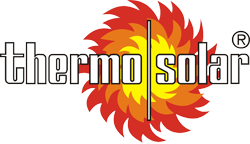Other objects
- Introduction
- /
- References
- /
- Other objects
USE OF COLLECTORS IN INDUSTRY
The industrial sphere is an area in which the use of collectors has a huge potential. Especially in the area of temperatures up to 80 ° C, it is currently possible to make meaningful use of collectors in almost every industrial area, at least for heating water for social purposes, but especially for technological purposes.
In the case of successful development and production of collectors for the so-called “Low temperatures” i.e. temperatures below 200 ° C, the range of possibilities will be significantly expanded, especially in the food industry, textile industry, agricultural primary production, medicine or general services. In our conditions, however, it is almost always necessary to combine solar heating with a conventional source. It will provide energy needs in times of insufficient solar radiation.
use in AGRICULTURE
Whether it is the processing of meat, milk or various plant products, all these technologies have a high consumption of hot water. Many plants most often use electricity to heat it. Thus, operating energy costs make up a significant part of production costs. One way to effectively reduce these costs is to use solar energy.
Practical examples from the past and today show that with economically acceptable costs, up to half of the energy can be saved annually to heat hot water. Depending on the size of the production, it is tens to hundreds of thousands of kWh per year. The return on investment can thus be up to 5 years.
An example of an efficient solar system in this type of building is the solar system at the dairy in the village of Lovčica – Trubín.
OUR EXPERIENCE
THERMO / SOLAR Žiar s.r.o. has more than 40 years of experience with the installation of solar systems for various purposes. Before 1989, a substantial part of production went to various agricultural and food businesses. In the period from 1980 to 1991, approximately 20-25 thousand m2 of solar collectors were produced in the Žiar aluminum plant.
The change in political and social conditions after 1989 meant the demise of most of the United Farmers’ Cooperatives (JRDs), but many solar collectors were dismantled from these buildings and re-installed on family homes, where they still serve their owners.

